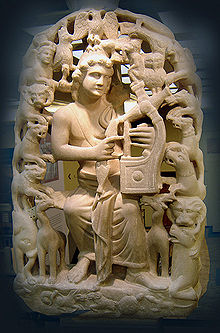Polyphonic song of Epirus
| Music of Greece | |
|---|---|
 |
|
| General topics | |
| Genres | |
| Specific forms | |
| Media and performance | |
| Music awards |
|
| Music charts | |
| Music festivals | |
| Music media |
|
| Nationalistic and patriotic songs | |
| National anthem | "Hymn to Liberty" |
| Regional music | |
| Related areas | Cyprus, Pontus, Constantinople, South Italy |
| Regional styles |
|
The polyphonic song of Epirus is a form of traditional folk polyphony practiced among Albanians, Aromanians, Greeks and Macedonian Slavs in southern Albania and northwestern Greece. The polyphonic song of Epirus is not to be confused with other varieties of polyphonic singing, such as the yodeling songs of the region of Muotatal, or the Cantu a tenore of Sardinia.
Among Greeks, polyphonic song is found in the northern part of the Greek region of Ioannina; in Ano Pogoni, (Ktismata, Dolo, Parakalamos) and some villages north of Konitsa), as well as in very few villages in northeastern Thesprotia (Tsamantas, Lias, Vavouri, Povla). Among the Greek minorities in southern Albania (Northern Epirus), polyphonic singing is performed in the of regions of Dropull, Pogon (Kato Pogoni) (Poliçan) and the cities of Delvinë, Himara, Sarandë and Gjirokastër.
Greek polyphonic groups can include six different parts: taker (partis), turner (gyristis), spinner (klostis), isokrates, rithis (the one who "drops" the voice) and foreteller (prologistis). Songs are performed in two (taker and turner or taker and isokrates), three, four or five voices. In five-voice singing all parts are present, while the role of the spinner and the rihtis is performed by one part. The main voice, the taker, can be sung either by men or women, but it can also alternate between them. Greek polyphonic groups usually consist of 4 to 12 persons.
...
Wikipedia
